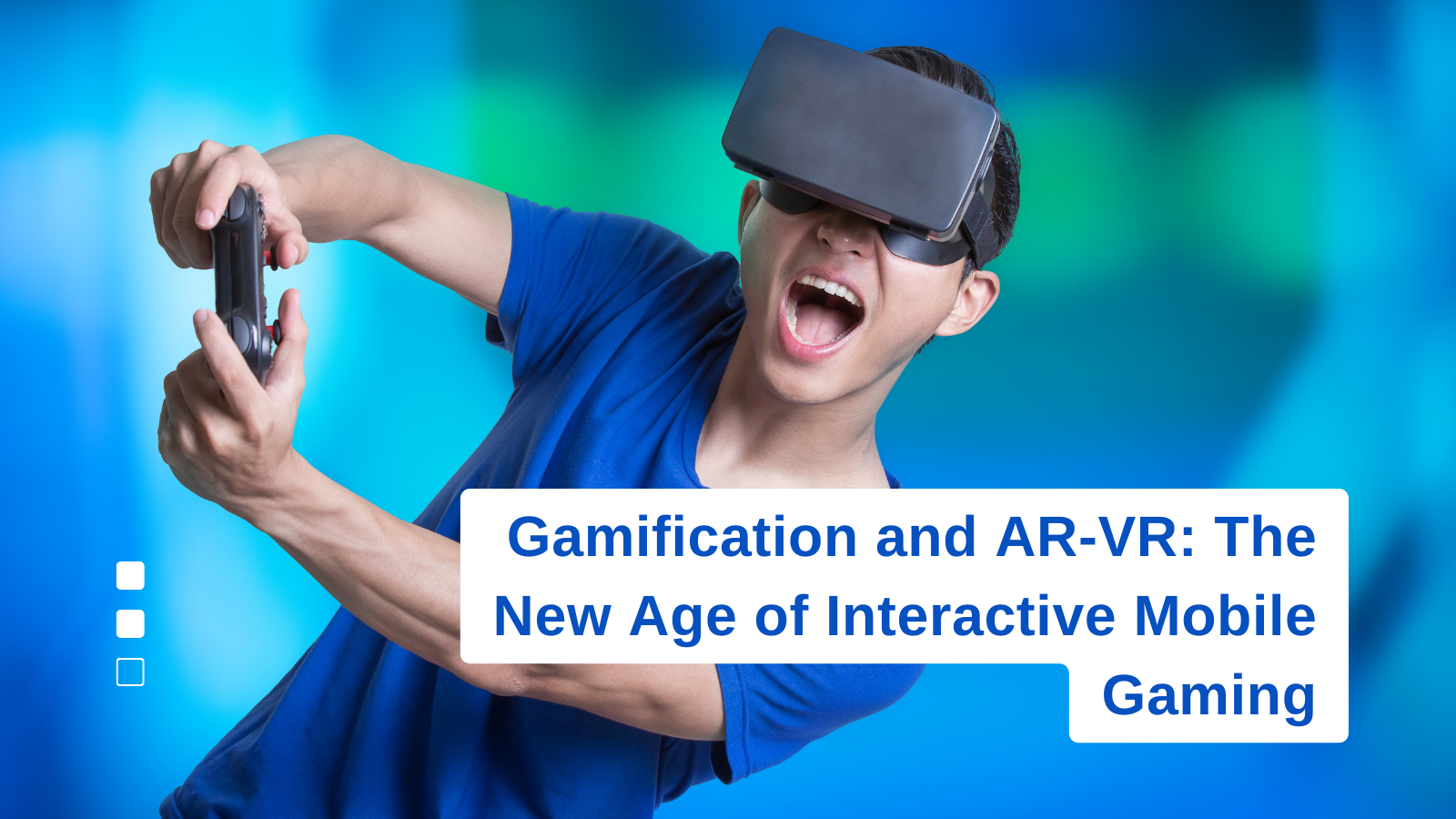Gamification and AR-VR: The New Age of Interactive Mobile Gaming
The convergence of gamification, virtual reality (VR), and augmented reality (AR) is changing the manner in which we play, engage, and even learn via mobile games. As technology breaks new grounds, mobile interactive gaming is no longer a hobby—it's a holistic experience that bridges reality and digital thrill.
Here, we talk about how gamification and AR/VR are leading the change, its psychology, real-world success stories, future trends, and the bright future of interactive mobile gaming.
The Evolution of Mobile Gaming
Let's step back. We were in the early 2000s with Snake on our Nokia phones—a game that defined mobile entertainment for an entire generation. Then Tetris, Brick Breaker, and then the touchscreen era with Angry Birds and Temple Run.
Cut to today—mobile gamers are fighting fierce battles of PUBG Mobile, Call of Duty, or wandering virtual worlds in Pokémon Go.
This is how it progressed:
Smartphone Penetration: With over 6.8 billion smartphone users worldwide, mobile gaming penetrated almost every corner of the globe.
Mobile Internet: 4G and more recently 5G have made real-time multiplayer and AR/VR content possible.
Cloud Gaming: Google Stadia and Xbox Cloud are offering high-end gaming experiences to the mobile platform.
Behavior Shift: Gaming is mainstream now—not hardcore enthusiasts or teenagers anymore. everybody games, from the daily commuter to the grandma.
This change brought about the subsequent leap: interactive experiences driven by gamification, AR, and VR.
Understanding Gamification on Mobile Apps
And before we go deep into the sci-fi world of AR/VR, let's talk about gamification—the bread and butter of most addictive apps.
What is Gamification?
In brief, gamification is the use of game mechanics in a non-game context to motivate and engage users. Think points, badges, leaderboards, or daily streaks.
Core Gamification Elements
Points & Rewards – For work done or challenging tasks
Levels & Progression – To demonstrate improvement or ability.
Challenges & Missions – To make it exciting.
Leaderboards – For social competition
Streaks & Reminders – For building habits and recall
How Does It Work?
It pertains to the human psychology:
Dopamine release when we win or advance
FOMO since others are ahead on the leaderboard
Commitment bias—"I've come this far, might as well continue
Achievement drive—we enjoy opening things
Real-Life Gamified Apps:
Duolingo: gamification of language learning with streaks and XP.
Fitbit/Google Fit: Rewards for reaching a daily activity goal.
Habitica: Turns your to-do list into a role-playing game adventure.
Mobile games have taken these mechanisms and powered them up with AR and VR. What do we get? Something revolutionary indeed.
AR and VR in Mobile Gaming
What is AR?
Augmented Reality (AR) overlays virtual information on top of the physical world using your phone's sensors and camera.
Example: Having a wild Pikachu in your bedroom.
What is VR?
Virtual Reality (VR) immerses you in a fully computer-generated 3D world, typically by means of a headset.
Example: Zombies battling inside a haunted mansion that you can walk around and explore.
Mobile-Friendly AR/VR Games:
Pokémon Go (AR): Over 1 billion downloads, legendary AR experience
Jurassic World Alive (AR): Find habitats to find dinosaurs
VR Thrills (VR): Roller coaster simulation on mobile headsets
Google Cardboard (VR): Affordable VR with a phone and a $10 viewer
How Does Mobile Support This?
Cameras for real-world images
GPS for geo-location
Gyroscopes for tracking movement
Accelerometers to sense movement
Combined, these elements allow smartphones to provide immersive, reality-bending experiences from your pocket.
The Convergence: Gamification converges with AR/VR
Now, this is where things get most interesting. When gamification meets AR/VR, we are entering a whole new level of interactivity.
Why It Works So Well
Exploration + Rewards = Physical movement in response to virtual rewards
Storytelling + Immersion = Feel like you're part of the game world.
Challenge + Reality = Real-world activities become missions.
Examples
Gamified AR: AR treasures in AR games such as Treasure Hunt AR are virtually assigned at real-world locations. Players must wander around and collect points.
Fitness Meets Fun: Zombies, Run! turns your jog into a mission to survive, gamifying fitness through audio-driven AR.
Play-based Learning: Wonderscope uses AR to enable interactive storytelling for kids
Where gamification meets AR/VR, customers aren't just playing, they're living the game.
Case Studies of Iconic Games
Pokémon Go
AR + location-based gameplay
Levelled, with Pokéstops, badges, daily streaks
More than $6 billion in revenue
Constructed communities, events, even citywide scavenger hunts
Zombies, Run!:
Audio AR fitness game
Missions + rewards to make running enjoyable
Gained cult following among the fitness-conscious masses who loathed running Ingress (by Niantic):
AR-based real-world strategy game with community cooperation
Gamification: factions, portals, missions, and live events
These games illustrate that immersive tech plus simple gamification is serious engagement.
User Psychology and Behavioral Hooks
Behind every great game lies a clever observation of how the human mind works that help you Ar vr app development company.
What Hooks Us?
Instant Rewards: A coin drop sound releases dopamine.
Leveling Up Feedback: "Level up!" satisfies our need to advance
Scarcity: Time-limited products or activities prompt immediate action.
Social Validation: Competing peers or international users.
Real-world Value:
Habit Development: AR/VR games support physical activity (steps, discovery).
Mental Boost: Augmented reality puzzle games such as Merge Cube enhance problem-solving abilities.
Emotional Resonance: Story-driven VR games create lasting resonance.
Gamified Company developed an app for AR/VR games that doesn't just kill time—these games touch our interests, our habits, and our wants.
The Future of Interactive Mobile Gaming
So, what then?
Emerging Technologies:
AI-Based Gameplay: Adjustable storylines and levels of difficulty.
Smart Glasses: Next-generation AR wearables are being developed by Apple and Meta, among others.
Spatial Audio & Haptics: Listen to footsteps or hear enemy approaches in 360°.
Metaverse on Mobile:
Ever-lasting worlds where your avatar lives on after each session.
Cross-game assets (NFTs, skins, characters).
Virtual economies and real-world monetization.
Social + Collaborative Play
Multiplayer AR scavenger hunts
VR social lobbies where gamers come together and talk
Team missions, team-based AR combat, or city-scale events
Monetization Trends:
In-app purchases of avatars and gear
Ads tied to location (sponsored Pokéstops)
NFTs as collectibles or tradable assets
Subscription-based gaming models
Mobile gaming is no longer an isolated, static activity—it's social, immersive, and constantly changing.
Challenges and Ethical Concerns
Of course, there are difficulties associated with innovation.
Key Issues:
Privacy Risks: AR games use GPS and cameras—setting off security alerts. Overstimulation: Constant notifications and gameplay can affect one's mental health. Addiction: Gamification can lead to compulsive usage. Tech Limitations: Not all phones support AR/VR without issues. Accessibility: Not everyone can afford or use VR equipment. The Solution Ethical design with focus on balance. Options for low-spec devices. Parental controls, break reminders, and opt-in privacy permissions. Responsible innovation ensures that pleasure does not come at the cost of wellbeing. Conclusion We are in a golden era of mobile gaming—where the virtual and real worlds merge, and the games no longer just amuse us—games inspire, they move us, and motivate. Gamification and AR/VR aren't buzzwords. They are the technologies that are making a new level of interaction possible. AR VR App Development Company They're making games more personal, more immersive, and more impactful than before. With every move forward in technology, so does our gaming. And one thing for sure: This is just the beginning.
Subscribe Now
Get the weekly updates on the newest brand stories, business models and technology right in your inbox.
More Blogs
The Essential Guide to Automation AI: What Actually Works in 2025
AI Automation has demonstrably reshaped the workings of businesses by processing data and completing repetitive tasks faster and more efficiently than human workers. To illustrate, AI systems can now examine vast amounts of data, simul...
AR vs VR in Automotive_ From Virtual Test Drives to AR Dashboards
The automotive industry has experienced transformative changes in the recent years, all thanks to breakthroughs in immersive technology. The most notable changes are due to Augmented Reality (AR) and Virtual Reality (VR). The debate of...
App Store Optimization (ASO) Tips to Boost iOS & Android App Downloads
The process of increasing your program's exposure and download volume in the Apple program Store is known as app store optimization, or ASO. By customizing the right keywords, metadata, and user interaction metrics, ASO, like Search En...

 Awards & Recognition
Awards & Recognition








